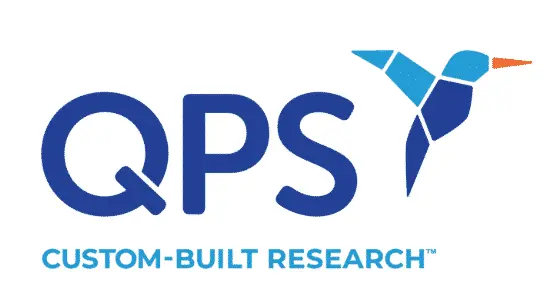For more than half the world’s population, rice is an essential staple. But the grain that sustains billions also exacts a steep price — consuming vast amounts of fertilizer, releasing greenhouse gases and straining both farmers and ecosystems. Now, an international research team led by scientists at the University of Massachusetts (UMass) Amherst in the US and Jiangnan University in China has discovered a remarkably simple way to overcome these challenges by giving rice plants a microscopic dose of selenium.
Their study, published in Proceedings of the National Academy of Sciences, reveals that spraying rice plants with nanoscale selenium can make them dramatically more efficient at using nitrogen fertilizer while enriching their nutritional value and curbing pollution. “The Green Revolution massively boosted agriculture output during the middle of the last century,” said Baoshan Xing, University Distinguished Professor of Environmental and Soil Chemistry at UMass Amherst and co-senior author of the study. “But that revolution is running out of steam. We need to figure out a way to fix it and make it work.”

The Fertilizer Problem
The fertilizers that powered 20th-century agriculture now represent one of its biggest challenges. They are costly to produce, generate large amounts of greenhouse gases and largely go to waste once applied to fields. In rice paddies, nitrogen use efficiency, the percentage of fertilizer taken up by plants, can be as low as 30%. The rest leaches into waterways, driving algal blooms and dead zones, or escapes into the air as methane, ammonia and nitrous oxide. All three are potent greenhouse gases.
“Everybody knows that we need to improve [nitrogen use efficiency],” Xing explained. The challenge lies in finding a method that boosts productivity while minimizing environmental harm.
How Selenium Changes the Equation
Lead author Chuanxi Wang and co-senior author Zhenyu Wang of Jiangnan University discovered that applying nanoscale selenium to rice leaves and stems offered an elegant fix. “We used an aerial drone to lightly spray rice growing in a paddy with the suspension of nanoscale selenium,” Wang said. “That direct contact means that the rice plant is far more efficient at absorbing the selenium than it would be if we applied it to the soil.”
Selenium’s impact was striking. It improved photosynthesis by more than 40%, allowing plants to capture and convert more carbon dioxide into energy-rich carbohydrates. Those sugars traveled down to the roots, which grew larger and healthier. In turn, the roots released compounds that stimulated beneficial soil microbes. These microbes helped the plant draw in more nitrogen and ammonium from the soil, increasing nitrogen use efficiency from 30% to 48.3%.
At the same time, greenhouse gas emissions from the soil dropped sharply, with reductions in nitrous oxide and ammonia of 18.8 to 45.6%. In addition, the rice produced more grain with higher levels of protein, essential amino acids and selenium, improving its nutritional profile.
Economic and Environmental Payoffs
By improving how efficiently rice uses nitrogen, the team’s approach allowed farmers to cut fertilizer use by 30% without losing yield. The economic benefit per ton of rice rose by nearly 40%. Given that rice cultivation accounts for 15 to 20% of the world’s nitrogen use, the potential global impact is significant.
Selenium itself is a crucial micronutrient for both plants and people, and nanoscale delivery allows the element to do double duty — nourishing crops while reducing pollution.
A Path Forward for Sustainable Agriculture
The innovation represents a rare win-win in modern agriculture: higher yields, healthier food and fewer environmental costs. It also marks the first demonstration that such nanoscale interventions work not just in laboratory settings but in real-world field conditions.
With its combination of precision, efficiency and scalability, the technique offers a glimpse of a new agricultural revolution — one powered not by chemical excess but by molecular finesse. If nanoscale selenium lives up to its promise, it could help farmers worldwide grow more food with fewer resources and help feed a growing population without deepening the planet’s environmental debt.
Did you enjoy this blog post? Check out our other blog posts as well as related topics on our Webinar page.
QPS is a GLP- and GCP-compliant contract research organization (CRO) delivering the highest grade of discovery, preclinical, and clinical drug research development services. Since 1995, it has grown from a tiny bioanalysis shop to a full-service CRO with 1,200+ employees in the US, Europe, Asia, India and Australia. Today, QPS offers expanded pharmaceutical contract R&D services with special expertise in pharmacology, DMPK, toxicology, bioanalysis, translational medicine, cell therapy (including PBMCs, leukopaks and cell therapy products), clinical trial units and clinical research services. An award-winning leader focused on bioanalytics and clinical trials, QPS is known for proven quality standards, technical expertise, a flexible approach to research, client satisfaction and turnkey laboratories and facilities. Through continual enhancements in capacities and resources, QPS stands tall in its commitment to delivering superior quality, skilled performance and trusted service to its valued customers. For more information, visit www.qps.com or email info@qps.com.




